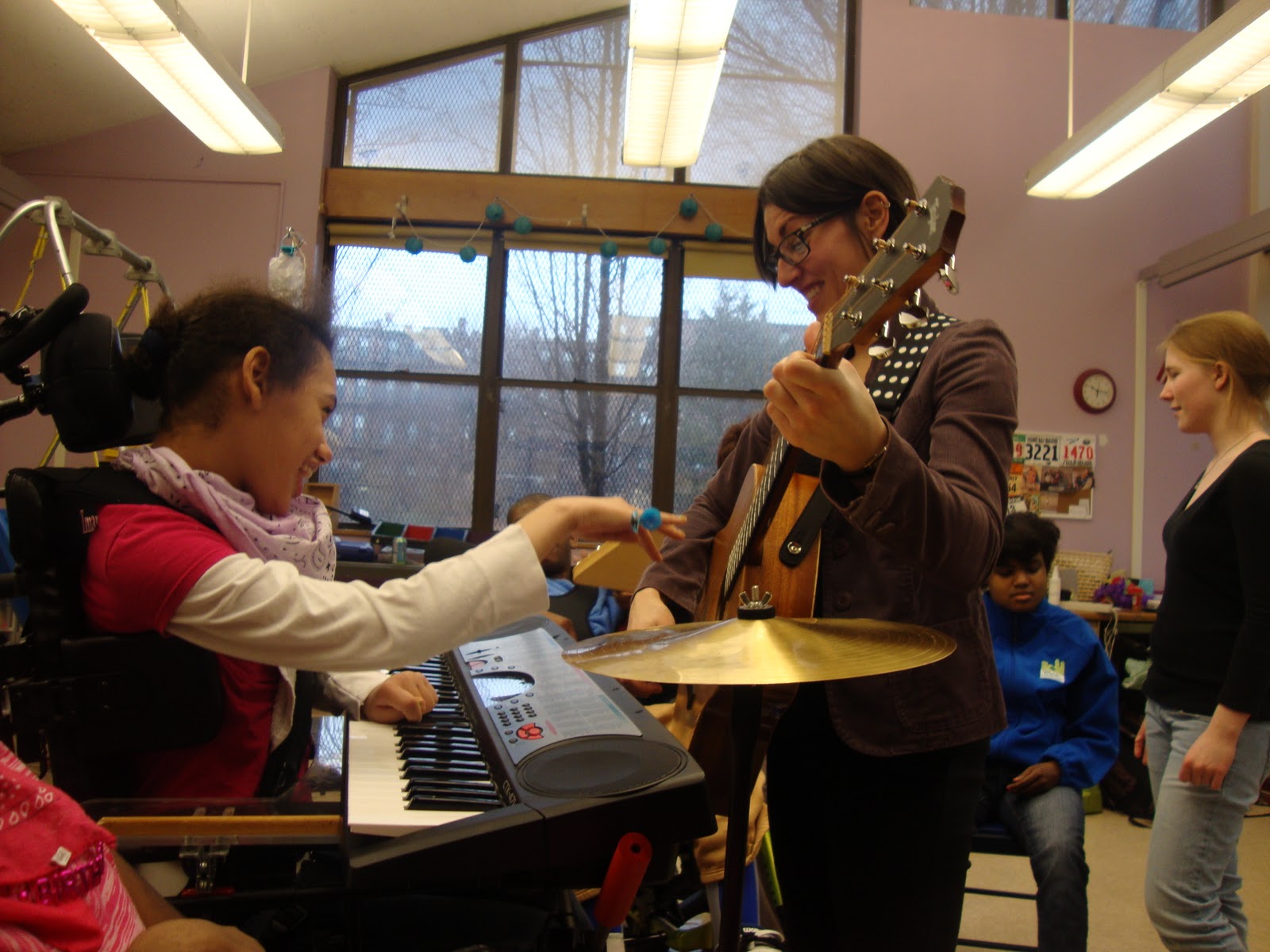Rhythmic auditory cueing improves gait in CP patients
Rhythmic auditory entrainment — a process that provides a timing cue for a biological rhythm — improves gait performance in patients with cerebral palsy (CP), research from Germany suggests. The study was published in the journal Neuropsychiatric Disease and Treatment.

Music Therapy for Cerebral Palsy: The Carter School. The Artistic Synapse
By Jose Marques Lopes PhD, Cerebral Palsy News Today January 29, 2018
CP patients experience motor dysfunction that may lead to a progressive increase in fatigue, susceptibility to falls, reduced coordination, increased energy expenditure, postural instability, muscle contractions, and bone deformities.
Patients may also develop sensory cognitive and behavioral deficits which result from alterations in specific brain areas. These deficits may in turn affect motor function. An example is the drop in gait patterns, which may be due to reduced conscious attention to autonomic movements such as gait.
Common therapies for motor dysfunctions in cerebral palsy include training with virtual reality, physical and occupational therapy, physical exercise, and orthoses.
Recent studies have explored rhythmic auditory entrainment as a strategy to decrease the sensorimotor deficits in cerebral palsy patients.
Research showed this approach modulates a wide range of processes within the brain. The periodic auditory rhythms were seen to activate movement patterns in patients with movement disorders. Auditory entrainment was also successfully applied in cognitive rehabilitation and in speech and language therapy.

Effects of Auditory Cueing in Gait Training for Stroke Patients.
Given its reduced cost and viability as a home-based intervention, this method may be applied in developing countries. Therefore, researchers performed a systematic review of the literature to analyze the effects of auditory entrainment on gait in CP patients.
“We attempted to develop a state of knowledge for the use of patients and medical practitioners, where both qualitative and quantitative data from high-quality studies can be interpreted,” the researchers wrote.
The analysis included nine studies involving 227 participants — 108 children and 119 adults.
Qualitative results suggested consistent benefits of rhythmic auditory entrainment on gait performance. And quantitative data showed beneficial effects of rhythmic auditory cueing on gait dynamic index — which assesses gait, balance, and fall risk — as well as gait velocity, cadence, and stride length in children and adults with cerebral palsy.
“This review suggests the incorporation of rhythmic auditory cueing for enhancing gait performance and stability in people with cerebral palsy,” investigators wrote.
Future studies should evaluate the type of modified auditory cueing that may be more beneficial in CP patients, researchers said.
| Jose Marques Lopes PhD |
| José is a science news writer with a PhD in Neuroscience from Universidade of Porto, in Portugal. He has also studied Biochemistry at Universidade do Porto and was a postdoctoral associate at Weill Cornell Medicine, in New York, and at The University of Western Ontario in London, Ontario, Canada. His work has ranged from the association of central cardiovascular and pain control to the neurobiological basis of hypertension, and the molecular pathways driving Alzheimer’s disease. |
Source Cerebral Palsy News Today
| References |
Effect of rhythmic auditory cueing on gait in cerebral palsy: a systematic review and meta-analysis, Shashank Ghai, Ishan Ghai, and Alfred O. Effenberg. Neuropsychiatr Dis Treat. 2018; 14: 43–59. Published online 2017 Dec 22. doi: 10.2147/NDT.S148053 Full text
| Further reading |
Auditory rhythmic cueing in movement rehabilitation: findings and possible mechanisms, Schaefer RS. Philos Trans R Soc Lond B Biol Sci. 2014 Dec 19;369(1658):20130402. doi: 10.1098/rstb.2013.0402. Full text
Also see
Music Therapy for Cerebral Palsy: The Carter School The Artistic Synapse
Cueing Device For Improving Gait Ability in Parkinson’s Disease and Other Motor Disorders Stanford University
Music therapy and gait: rehab to a different beat Lower Extremity Review
